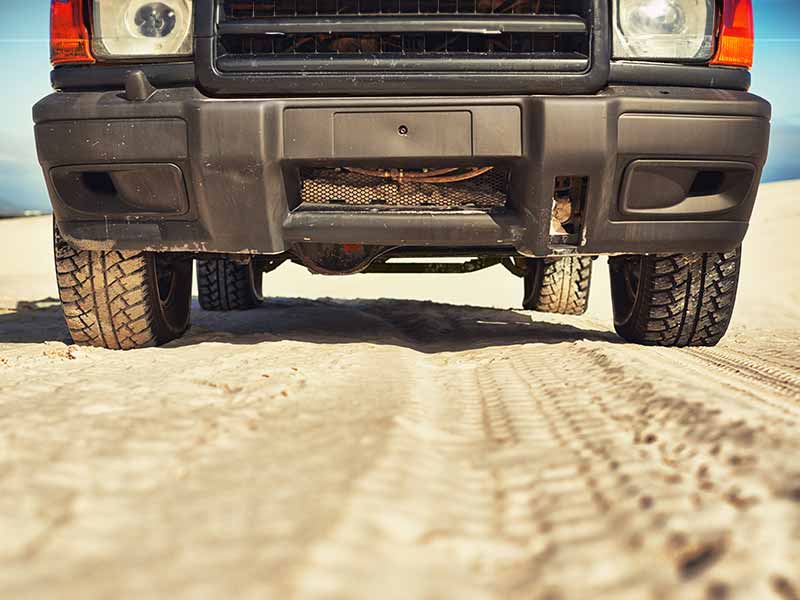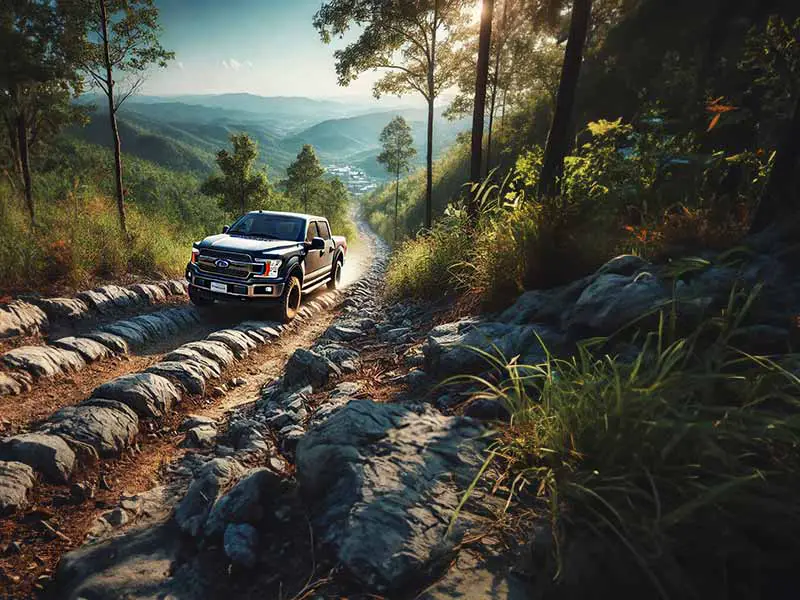Imagine you’re gearing up for an adventure across the dunes. You know that the right tire pressure can make all the difference between an exhilarating ride and getting stuck in the sand.
How To Air Down Tires For Sand
How much to air down tires for sand? Typically, this means lowering your tire pressure to about 15-20 psi, depending on your vehicle and tire specifications.
This increases the tire’s footprint, which improves traction and prevents you from getting stuck as easily.
In this article, we’ll cover everything from understanding the importance of tire pressure and the tools needed to air down your tires, to a step-by-step guide on how to do it properly. We’ll also provide tips for driving on sand and how to reinflate your tires after your adventure.
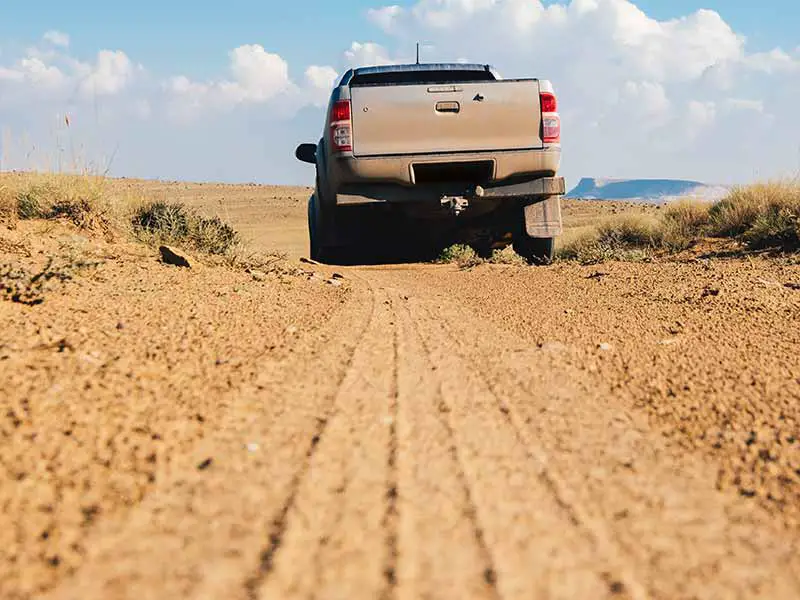
How Sand Affects Tire Pressure Needs
Driving on sand is like no other experience – your tires need to be soft enough to mold to the surface but firm enough to support your vehicle’s weight. The right tire pressure for sand is typically much lower than on-road pressures, hovering between 15-20 psi for many vehicles, but this can vary. The goal is to find the sweet spot where your tires have enough volume to float atop the sand rather than dig in.
Understanding Tire Pressure
Tire pressure isn’t just a number – it’s the lifeline of your tire’s performance, especially when you’re tackling the unpredictable nature of sand. Properly airing down your tires can make the difference between a smooth, enjoyable ride and a frustrating, vehicle-stuck-in-the-sand situation. Let’s dive into what tire pressure means for your sand adventures and why precision matters.
The Role of Tire Pressure in Vehicle Performance
- Traction and Contact: Lowering the air pressure in your tires increases their footprint on the surface, which in return, provides better traction. This is particularly important on sand, where a wider tire surface distributes the vehicle’s weight more evenly and prevents sinking.
- Flexibility and Durability: Properly aired-down tires can more easily flex and adapt to the soft, uneven terrain of sand. This flexibility helps protect the tire and rim from damage caused by the terrain’s unpredictability.

Craftsman Portable Air Compressor
Equipment Needed
Before we get into the nitty-gritty of deflating your tires, let’s talk about what you’ll need to get the job done right.
- Tire Gauge: A reliable tire gauge is non-negotiable. You’ll need to accurately read your tire’s pressure before, during, and after deflation.
- Portable Air Compressor: Once you’re back on solid ground, you’ll need to bring those tires back up to safe driving pressures.
- Deflators: These handy tools can make deflating your tires a consistent and quicker process.
For a deeper dive into why and when to deflate tires for off-roading, check out our comprehensive guide on When to Deflate Tires for Off-Roading.
Step-by-Step Guide to Airing Down
Getting your tires to the right pressure for sand driving isn’t just about letting out air. It’s about doing it correctly and safely. Here’s how:
- Check Initial Tire Pressure: Start by knowing your baseline. Use your tire gauge to get an accurate reading of your tire’s current pressure.
- Determining the Right Pressure for Sand: This will vary depending on your vehicle type and tire size, but a general rule of thumb is to aim for 15-20 psi. However, make sure to consult your vehicle’s manual or a professional to find the optimal pressure for your specific situation.
- Deflating the Tires: Use your deflators or manually release air from each tire, checking frequently with your tire gauge to hit your target pressure accurately.
- Double-Checking Pressure: Once all tires are deflated, go around one more time with your tire gauge to ensure they are evenly deflated and at the correct pressure.
Understanding the technicalities of airing down and the practical steps to do it right are crucial for any off-road enthusiast. As you prepare for your next sandy adventure, keep these insights and tips in mind for a smooth, enjoyable experience.
And for those interested in airing down without beadlocks, explore our insights on Airing Down Without Beadlocks.
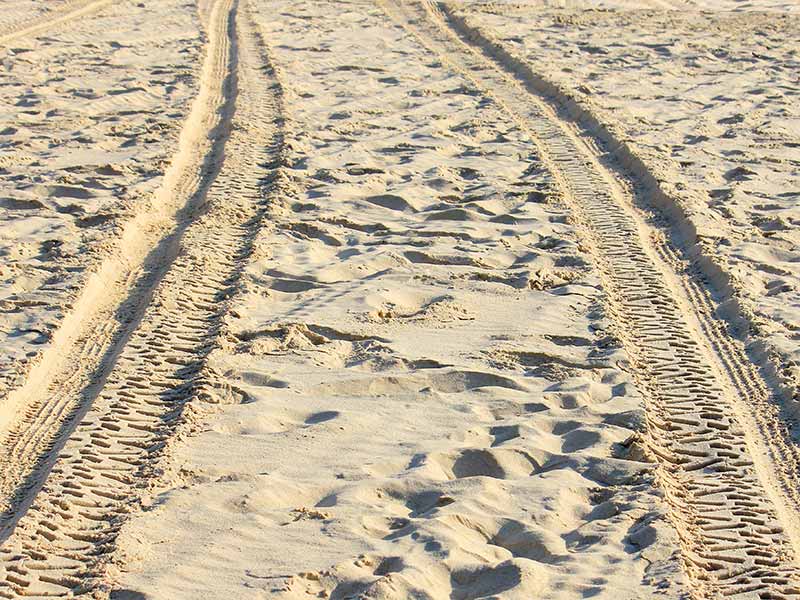
Driving on Sand
Once your tires are nicely aired down, it’s time to hit the sand! But wait, driving on this shifting, unpredictable terrain is an art in itself. Here are some essential tips to keep you moving smoothly over the dunes and not stuck in them.
Mastering Momentum and Control
- Consistent Momentum: Keep a steady, gentle pace. Sudden accelerations can dig your tires deeper into the sand, while too slow a movement might not give you the momentum needed to glide over soft spots.
- Smooth Steering: Avoid sharp turns. Gentle and gradual steering will help maintain traction and prevent your tires from digging in.
Navigating Different Sand Conditions
- Soft Sand: This is where your aired-down tires shine. The increased footprint allows for better floatation. Keep your movements smooth and steady.
- Packed Sand: Near the water, the sand might be firmer. You can move a bit faster here, but be cautious of transitioning between different sand types.
After the Adventure: Re-Inflating Tires
Your journey doesn’t end with the last grain of sand; ensuring your tires are back to their optimal road pressure is vital for safe driving post-adventure.
- Re-Inflating: Use your portable air compressor to bring the tires back up to their recommended pressure. Don’t guess; use your tire gauge for accuracy.
- Checking for Damage: Sand driving can be tough on tires. Once they’re back to pressure, give them a quick visual and physical inspection for any damage or unusual wear.
For more details on how to handle your tires post-off-road adventure, consider reading about how to Air Down Tires for Off-Road effectively.
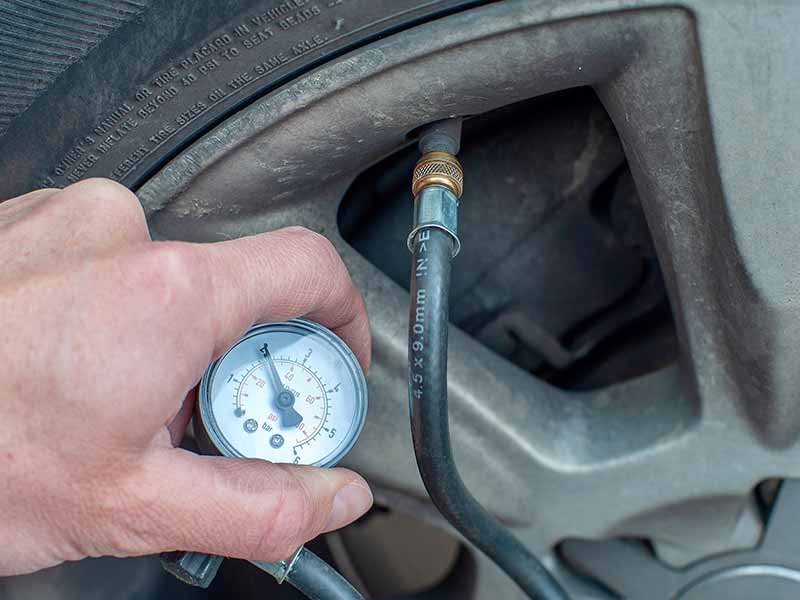
Additional Tips and Safety Precautions
Now that you’re equipped with the know-how of airing down and driving on sand, let’s bolster your preparation with additional tips and safety precautions. Being well-prepared can make your sandy adventure not only more enjoyable but also safer.
Safety Measures While Deflating and Inflating Tires
- Stay Alert: Always be aware of your surroundings when working on your tires, especially in remote or busy areas.
- Use Quality Tools: Ensure that your tire gauge, deflators, and air compressor are in good working order to avoid any mishaps.
Regular Vehicle and Tire Maintenance
- Pre-Trip Checks: Before heading out, give your vehicle a thorough check—brakes, engine, and especially tires.
- Post-Trip Care: Sand can get everywhere! After your trip, make sure to clean your vehicle thoroughly, including the tires and undercarriage, to prevent rust and wear.
Environmentally Conscious Driving
- Respect the Terrain: Stick to designated driving areas to protect the natural habitat and prevent erosion.
- Leave No Trace: Ensure that you take all your rubbish with you and leave the area as untouched as possible.
Be Safe Out On The Trails
- Understand Your Limits: Every vehicle has its limits on different terrains. Make sure you know what your vehicle can handle and avoid pushing it too far on challenging sand tracks.
- Be Prepared: Always carry the right equipment and know how to use it. A shovel and traction boards can be lifesavers if you find yourself stuck.
- Travel in Groups: Especially in remote sand areas, having another vehicle can make all the difference in a sticky situation.
- Stay Informed: Conditions can change rapidly in sandy areas. Keep an eye on the weather and any park or local advisories.
Resources
Below are some links you may find helpful when learning about tires:
- How to air down tires for off-roading – Fab Fours
- How to air down 0ff-road tires for overlanding – Gaia GPS
Final Thoughts
Airing down your tires for sand is an essential skill for any off-road or beach driving enthusiast. It increases your tire’s surface area, allowing for better traction and a smoother ride over soft terrain.
The right pressure depends on your vehicle and tires, so always check manufacturer recommendations. After your adventure, don’t forget to reinflate your tires to the standard pressure for everyday driving conditions.
Good luck and happy motoring.
